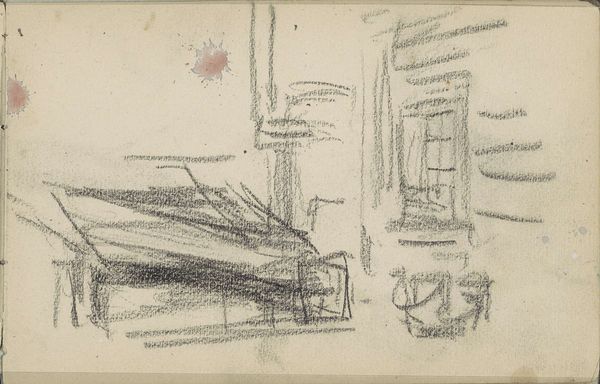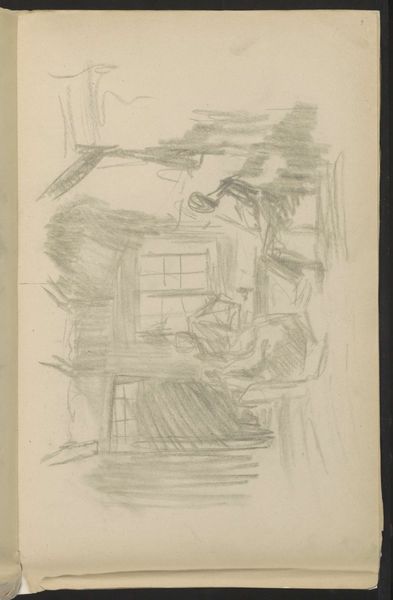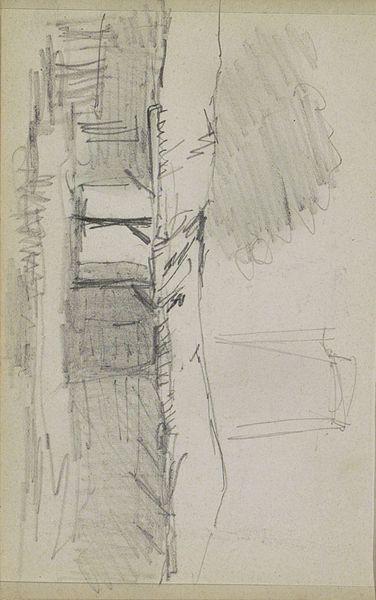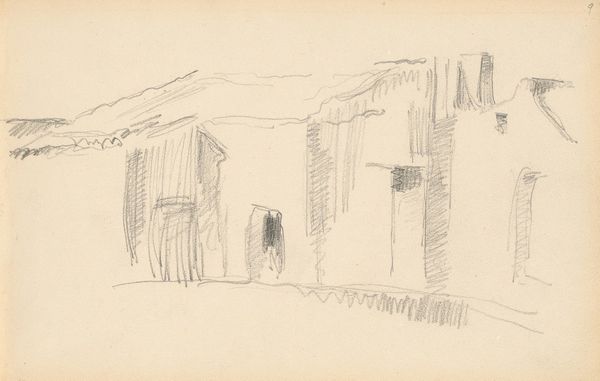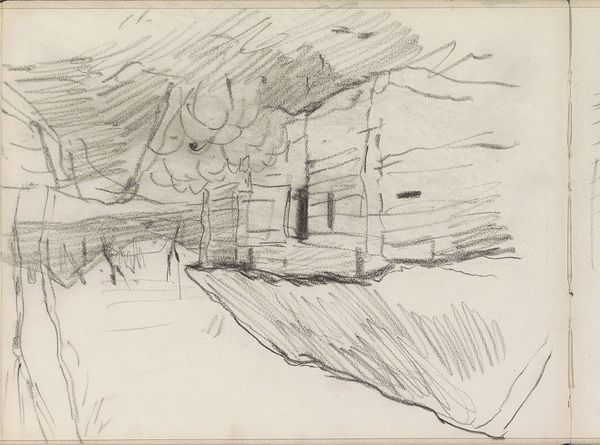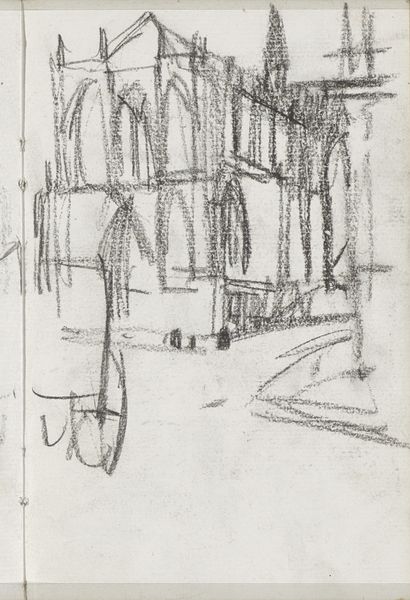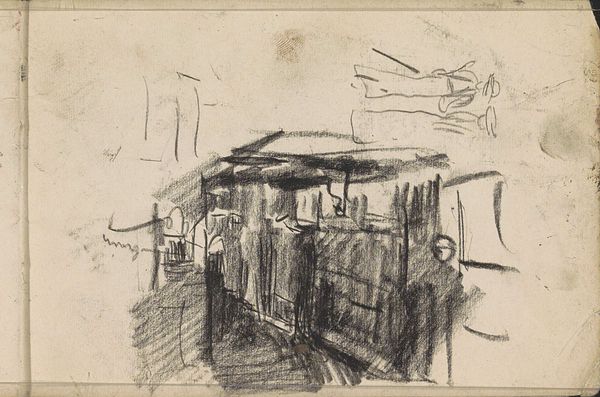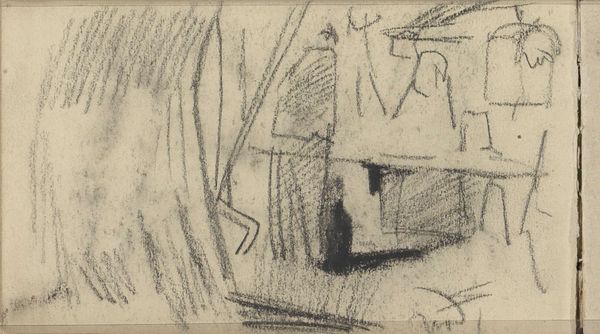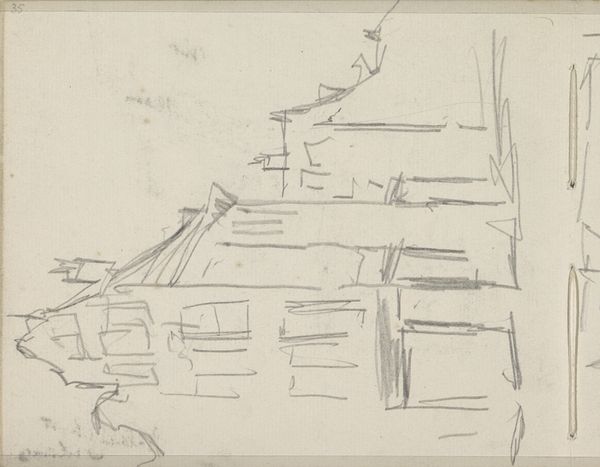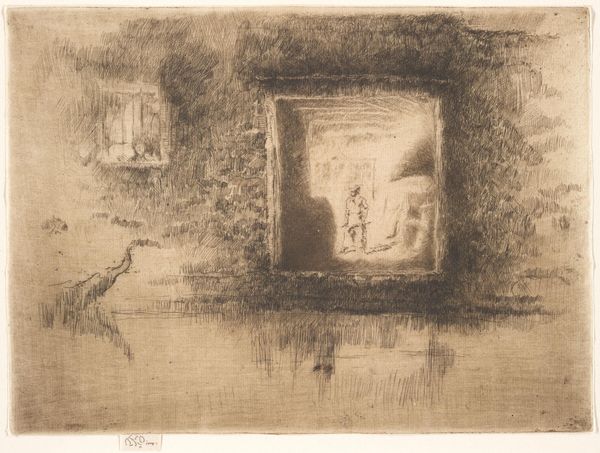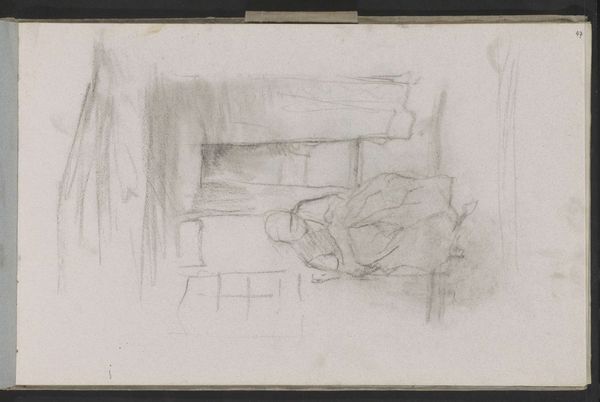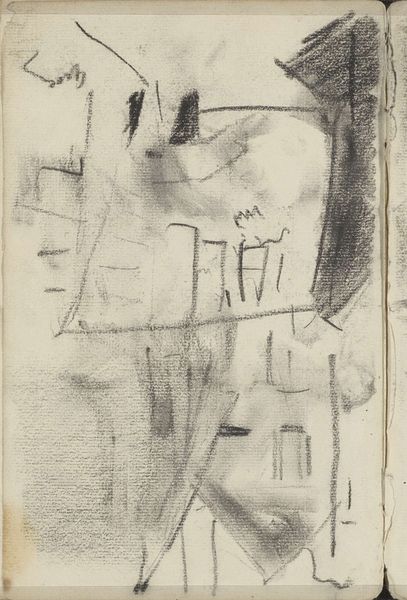
drawing, paper, pencil
#
drawing
#
impressionism
#
pencil sketch
#
landscape
#
paper
#
pencil
#
realism
Copyright: Rijks Museum: Open Domain
Anton Mauve sketched this charcoal drawing, "Zittende vrouw in een interieur", depicting a seated woman within a room. The window to the right acts as more than just a source of light; it’s a symbol of transition and potential change. Consider the motif of the window throughout art history, from Renaissance Annunciations to Dutch Golden Age interiors, it appears as a threshold between interiority and the outside world, domesticity and freedom. Here, the stark and somber rendering of the window may reflect a psychological state. Windows have a historical presence in art, often appearing as openings for new possibilities or divine intervention. This may be a reflection of society's collective unconscious need to represent hope, but also confinement. Mauve's drawing captures a sense of contemplation. The interplay of light and shadow may evoke an emotional resonance that transcends its immediate subject, engaging us with a deeper, almost primal, response to light, space, and human presence. The symbols of the window are non-linear, ever-evolving, resurfacing and taking on new meanings in differing historical contexts.
Comments
No comments
Be the first to comment and join the conversation on the ultimate creative platform.
